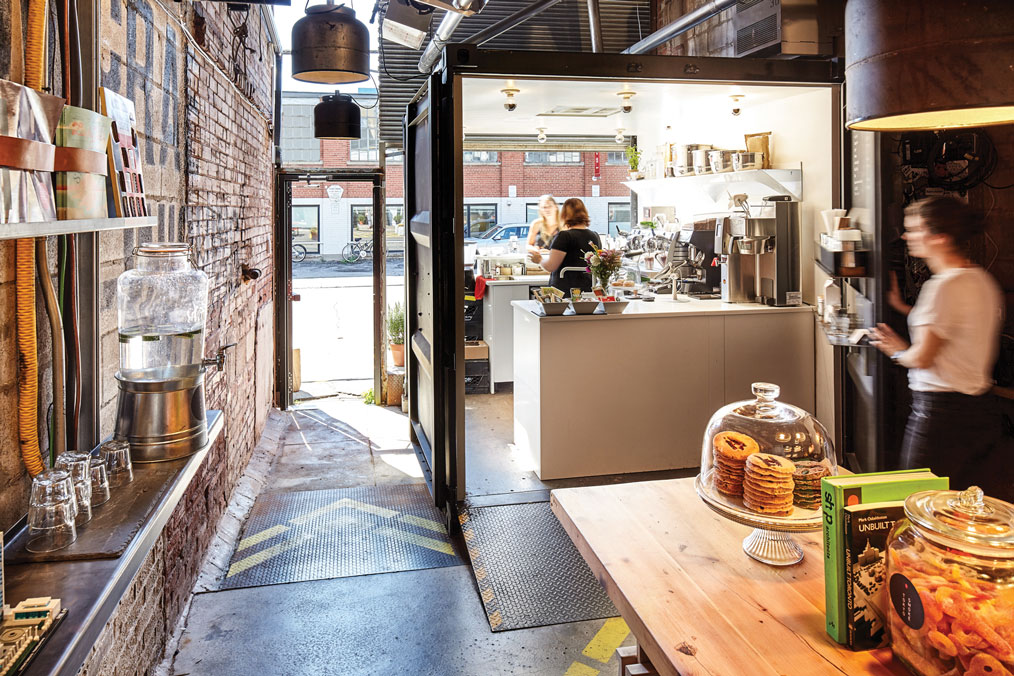This post is part of Pocket Cafés, a series examining tiny spaces transformed into bustling coffee stops.
[T]okyo Smoke occupies the passage between two buildings in Toronto’s Borough of Stafford, a creative corridor on the west side of town. “The space sat unused and dormant for years,” says Geoffrey Degrasse, head of operations and people. Over the course of a few months, the alley between the buildings was converted into a coffee bar and retail shop. The exposed exterior brick of the two buildings serves as its interior walls, a metal roof hangs overhead, and a rolling-style warehouse door opens to show its street-facing entrance. Inside of this makeshift structure, the café runs out of a refurbished shipping container, a cube measuring ten feet on each side. Shelves were built into the walls, including a condiment shelf made by drilling holes into the back door of the shipping container. It’s as strange a setup we’ve ever seen.
But it works.
Like many other tiny cafés, Tokyo Smoke takes advantage of the large window that spans the street-facing side of the bar. The U-shaped bar allows baristas to easily serve customers who are either outside or inside, with the espresso machine centrally located and cold storage tucked neatly underneath the counter.
Though cutting-edge design was a priority in the build-out, Degrasse says that the original layout wasn’t planned by people with coffee backgrounds. “That’s become evident as we’ve grown,” he says. The original design only included one countertop opening to accommodate the café’s many tubes and cords. “That’s a big problem that’s led us to have blocks in the waste pipe before and lack of flow for the water supply into the espresso machine,” Degrasse says. A second location in downtown Toronto gave them the opportunity to work out some of the quirks that arose from working in a condensed area. Like planning ample space for power cables and waste tubes.
The team at Tokyo Smoke continues to tweak their layout to find what works best, such as moving the condiment bar to the back of the shop to keep customers exploring their retail area (and keeping the cream cool) on warmer days. “There’s something to be said about being flexible in your design,” Degrasse says. “If you can build in some form of potential for changing things in the future, that does add a lot of value.”
Next, we’ll see how the tiny house movement inspired a café in Colorado Springs.
More in the series:
—Ellie Bradley is Fresh Cup‘s associate editor.










